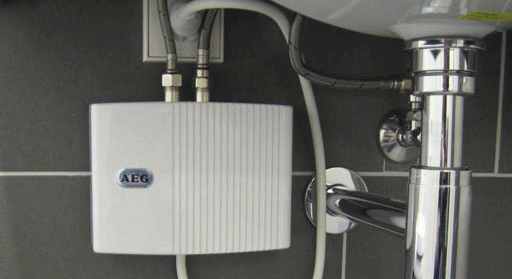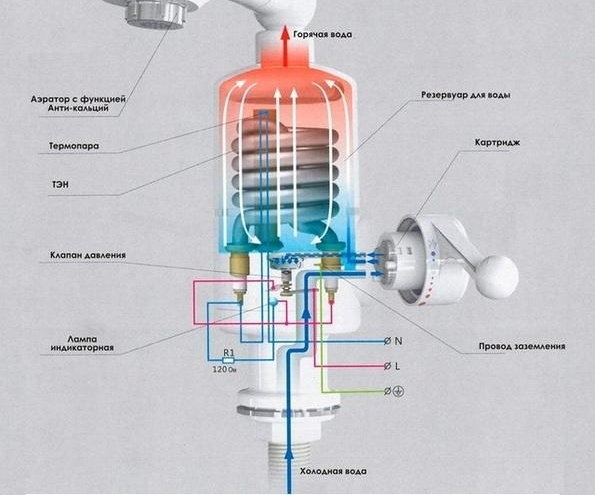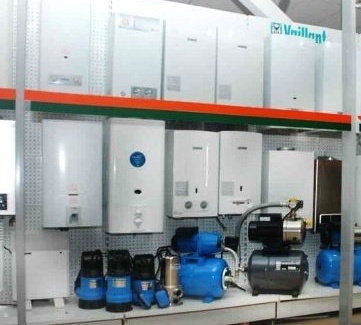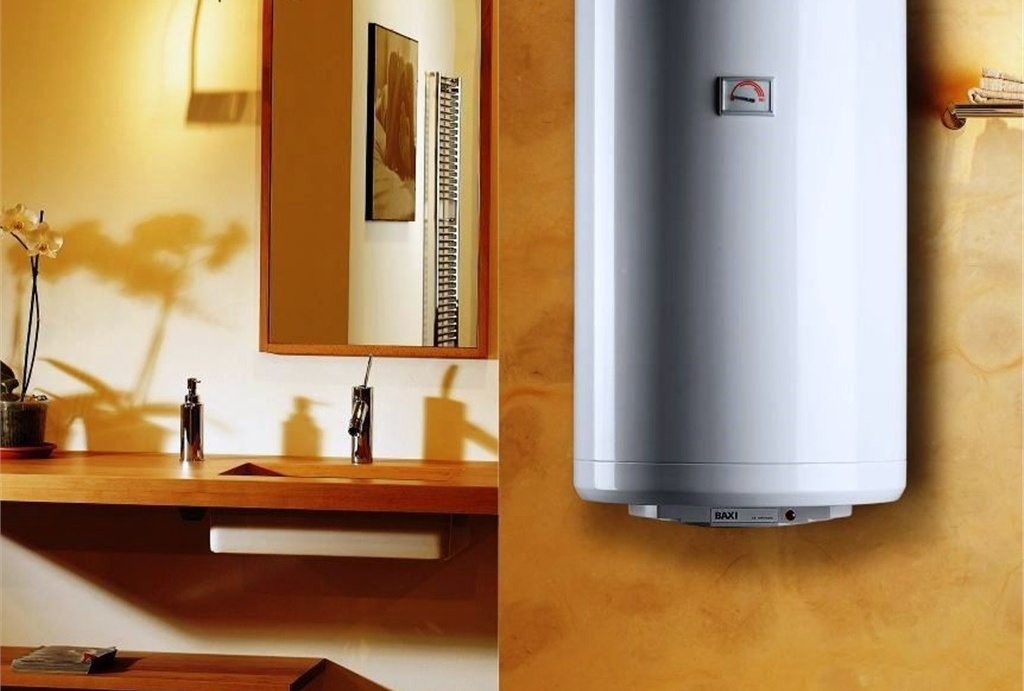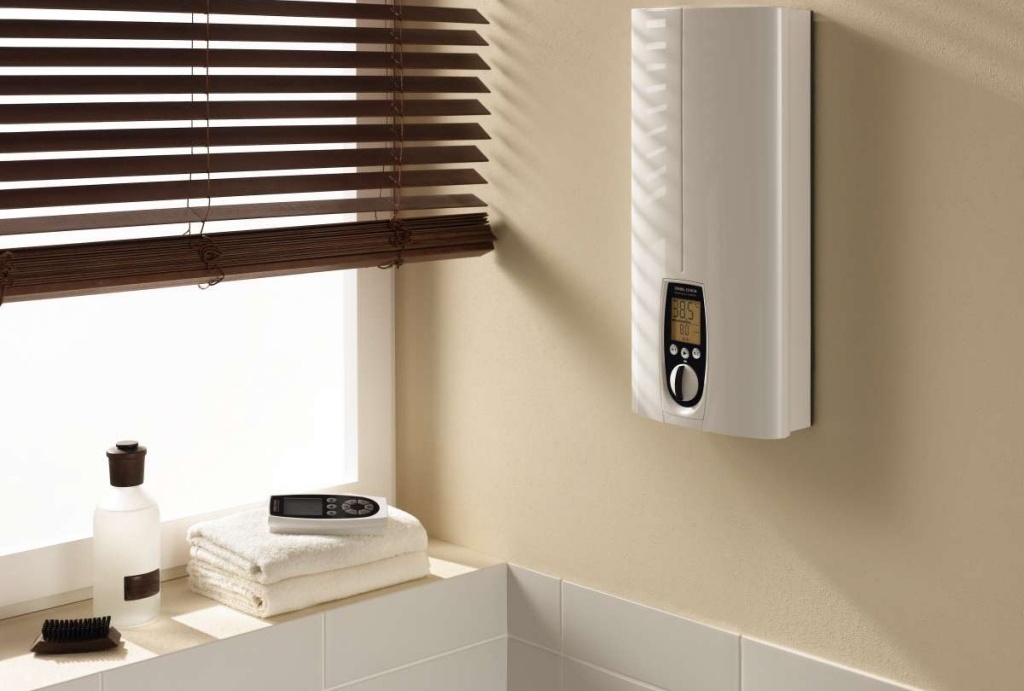How to choose an electric water heater for an apartment and a house
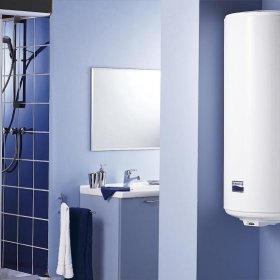
The centralized hot water supply in apartments is a definite plus of city life. If before hot water was a luxury, now it is a familiar attribute of a comfortable existence. In apartment buildings, the hot water supply schedule often changes due to summer repairs. And in country houses there is usually no connection to a hot water system. The only way out for the owners of apartments and country houses is an electric water heater. To choose the right boiler, you need to know some criteria and features.
Content
Types and features of electric water heaters
Very popular electric water heaters. The reason for this: an affordable source of energy and ease of installation (no need to call a special installation team). Undoubtedly, there are also disadvantages: the cost of electricity and the heating time (compared to a gas water heater).
There are several types of electric water heaters. The choice of a specific model depends on the following aspects:
- from the area of the apartment;
- number of points served;
- the number of people in the family;
- the size of the room where the device will be installed;
- method of installation.
There are many types and varieties on the market - manufacturers offer a huge assortment of quality products.
Flow type
Instantaneous water heaters are small and easy to install. They consume large amounts of energy and for uninterrupted operation they need a constant and high pressure in the crane. They are characterized by ease of installation, which is suitable for most modern apartments. The device consists of a housing, a heating element, temperature and pressure sensors, fuses. Sensors may not be available depending on the design.
The heating tank looks like a narrow pipe through which water passes and heats up in the process. A heating element in a device of this type is a heating element, an uninsulated spiral or a shell-and-tube heat exchanger. The latter is a tube with heated water, which is located inside the device with a coolant. When using a instantaneous water heater, it is not necessary to install the mixer separately.
This type of water heater has the only drawback - high energy consumption.Otherwise, it has a huge number of advantages, the most important of which: the device very quickly picks up the desired temperature, immediately warms the flow, because it does not have a limiter in the form of a storage tank. A device of this type is selected in the following cases:
- hot water is needed constantly and in small quantities;
- hot water is urgent and there is no time to wait until it is heated;
- not enough space for a large water heater.
By the time of operation, a flow-type water heater is inferior to others, it quickly fails than a device with a storage tank.
Pressure and non-flow flow boilers
Instantaneous water heaters differ in the way they work.
Pressure ones “crash” into the pipe and supply several water points with hot water. An expansion tank is not needed. Such devices have a complex structure and high cost.
Non-pressure boilers provide one point and are installed directly on the crane. With such a device, it is necessary to use a thermostatic mixer, usually it comes with the device.
The principle of operation of a flow-type electric water heater is to heat water with a heating element at the time it flows through the heater. If we consider the process in detail, then it looks like this:
- When cold liquid enters the housing, a pressure sensor is activated.
- The pressure sensor includes a heater (one or more depends on the desired temperature).
- The fluid in the housing heats up on contact with the heater.
- The heated liquid exits through the outlet pipe into the faucet.
The temperature of the liquid at the outlet depends on the power of the device. Storage capacity is not provided here. A decrease or increase in temperature is controlled by increasing or decreasing the pressure. The higher the power, the higher the heating temperature and the greater the cost of electricity. Devices of this type are not recommended for use in old apartment buildings, because the wiring may not withstand the power consumption.
In some models, the heating elements are additionally closed with heat exchangers so that it does not come in direct contact with water for a longer operation of the device and the safety of the heating element. They are called water heaters with “dry” and “wet” heating elements. Devices in which the heater does not come into contact with water are fireproof and cost 2 times more.
Instantaneous water heaters differ in type of control:
- Hydraulic system — the device has a simple design and a minimum set of settings, such as switching on, off and several temperature modes or their absence.
- Electronic system - in expensive models of flow-through boilers there is an electronic control by a microprocessor. Regulate the heating power depending on the duct and the temperature of the incoming fluid, maintaining a constant temperature of the water at the outlet. If the pressure is very strong, the device protects against overheating, and the water stops heating. On some models, a pressure stabilizer is triggered during the differential pressure. In flow-type water heaters with electronic control, all information is displayed: temperature, water flow, current power. Additionally, a light indication can be installed, which warns of a temperature increase above the set temperature. More modern and expensive models are equipped with a remote control. The cost of a flow heater directly depends on the design: electronically controlled devices are more expensive, more reliable and more convenient to use.
Cumulative type
This type of boiler is convenient to use with a good power supply and the need for a large supply of hot water. It is convenient, easy to use and reliable.It is optimal when a large amount of hot water is required, and the flow-through boiler does not cope with the load on the wiring (this usually happens in old buildings).
The device consists of a thermos tank for accumulating water, a heating element and a magnesium anode, which is changed every six months, and a control panel with a thermostat. The equipment provides a volume of up to 1,000 liters, so it takes up a lot of space. Its main difference: the ability to deliver water simultaneously to several points of tapping and to constantly maintain the temperature. The cost of such a water heater is slightly more expensive than a flow heater.
The storage boiler does not exert a large load on the network, consumes less electricity, does not need special connectingif its power is less than 3 kW.
For the device to work safely and for a long time, the following conditions are necessary:
- Grounding.
- Reducer to compensate for increased pressure in the water main.
- Safety valve to protect the water heater from excessive pressure in the tank and to drain if necessary.
- Non-return valve to block the discharge of water from the tank (when the supply is interrupted) to avoid the heating of the heating elements.
Grounding, gearbox and safety valve are referred to as the “safety group”. Sometimes they need to be purchased separately, because they are not always in the configuration. Often, manufacturers assemble these elements into a single unit for ease of installation.
For a period of prolonged absence, it is recommended to drain the water from the boiler in order to avoid the growth of bacteria and damage to the device (if it is a winter period and the house is not heated).
The principle of operation of devices of this type is to heat and accumulate water and maintain the temperature at the same level as a thermos. Cold liquid enters through the pipe, then it is heated in the heater to a predetermined temperature. Water is supplied from below, and intake is from above, so it does not mix. The temperature of the water coming from the tank is stable. The task of thermal insulation in a water heater is to minimize heat loss.
If the device will constantly work at full power, it will quickly fail. The recommended optimum temperature to keep the water warm is 60 ° C. The device switches itself off when heated to the desired temperature, and when it decreases by several degrees, it turns on again. The heating rate directly depends on the consumed power and electricity.
Management in the storage water heater is mechanical and electronic. Electronic systems operate in energy saving mode, have a self-learning function: remember preferences and adjust the temperature automatically. Mechanical control is preferred if the mains voltage is unstable.
Combined
This type of water heater is used less often. It is also called an indirect heating boiler, the water in it is heated using a heat exchanger connected to a central heating system or a separate boiler. In the summer, when the heating system is turned off, heating occurs with the help of a heating element. Thus, it combines the functions of two water heaters: indirect and electric. They consume a lot of electricity, and they are almost never used in apartment buildings. It is more rational to use such a device in a private house.

Thanks to its compact and elegant design, the water heater fits perfectly into the interior of the kitchen or bathroom
The boiler consists of a storage tank with a spiral installed inside it, into which the coolant from the heating system enters. In the storage tank, water always keeps the temperature at the same level.Such a device is perfect for an autonomous system of hot water supply, since its prices are quite low, and heating during the heating period does not require additional costs.
During the heating period, the water heater is connected for indirect heating by means of a coil to the heating system (to the boiler). Water enters the coil and heats up. Since water is not required for the heat exchanger, the boiler efficiency does not drop.
In the summer, when the heating system is turned off, heating occurs in electric mode. A special element connected to the mains is responsible for heating. Electricity costs are increasing.
The larger the coil diameter and power consumption, the higher the productivity.
The water heater has a control panel and an adjusting built-in thermostat that controls the temperature in winter / summer mode. In the first case, temperature control is carried out by controlling the loading circulating pump, in the second - by controlling the heating element.
Bulk for giving
A bulk electric water heater is a great alternative if there is no running water. The device consists of a water tank and is equipped with a heating element and a crane. Water is poured into it manually. The volume of the tank is 5–20 liters. A bulk water heater is popular with summer residents. It is easy to use and lasts a long time. The difference between models in design and feature set. Most often, the water heater is represented by a cabinet, with a built-in sink and washbasin with a heating element. Under the sink is a drain tank. There are also models with a built-in shower hose. Such a device is plugged in and used by summer residents in a summer shower.
Power consumption is small. The connection takes place directly to the outlet, the heater heats up and heats the water in a few minutes.
Water heating in a bulk water heater is carried out by manual switching on or in automatic mode. Most models install an overheat protection system and shut off when the tank is empty.
Table: pros and cons of different types of boilers
| Type of water heater | pros | minuses |
| Flowing | Fast heating of water (30 seconds - 3 minutes); no limit on the volume of water; compactness and size. |
Big power for heating water; cable routing from the shield at high power. |
| Cumulative | Large volume of water (up to 200 l); connection to the power supply directly through the outlet; keeps water hot for a long time; service of several points of water intake simultaneously; consumes less electricity than a instantaneous water heater. |
Large dimensions; prolonged heating of water; use of electricity to maintain temperature; anode replacement. |
| Combined | Inexpensive content; light load on the power grid; fast heating of water. |
The price of the device and additional units; Installation requires approval by the appropriate authorities. |
| Bulk | Simple and easy to use; network connection in any conditions; fast heating of water; compact size. |
Cost of energy; TEN is subject to scale and corrosion. |
How to choose a water heater for an apartment and a house: basic criteria
So, we sorted out the types of water heaters, now let's move on to the criteria that are important when choosing a boiler:
- Volume of the tank. On average, the daily water consumption per person is about 50 liters. 15 liters are spent on technical needs, 30 - on a shower. For a family of three, a 90-liter water heater is enough. Boilers up to 1000 liters are usually used in large houses and cottages.
- A heating element.Boilers with a "dry" heating element are expensive, durable and practical, while "wet" boilers are subject to corrosion and salt deposition - this leads to poor heat transfer and repair of the device.
- Water heating rate. The larger the volume, the longer the water will heat up.
- Thermal insulation. The device must have high-quality thermal insulation - this helps to reduce energy costs for heating and maintaining the water temperature.
- Power supply and water pressure - whether they are suitable for normal and uninterrupted operation of the water heater. The larger the tank, the more power is required.
- Corrosion-resistant coating. The walls of the tank are constantly exposed to the aggressive effects of water, so they must be protected by a durable coating. Such a coating includes enamel, glass porcelain, stainless steel, titanium coating. Stainless steel costs a lot more, but also lasts longer.
It is also necessary to determine the installation location of the device (wall or floor installation), for what purposes hot water is needed, determine the exact distance between the points of water tapping, find out the exact power of the power supply.
Choosing a boiler depending on the number of water intake points
We calculate how many liters to choose a water heater for a family of two people, out of five people, with a different number of points of consumption.

For a different number of residents and points of water consumption, water heaters of various volumes are needed
The choice of electric water heaters is wide enough. The correct assessment of the criteria will help you choose a device that meets all the requirements. After making a selection of several models, it is recommended to compare energy efficiency. Often it makes sense to buy a model more expensive, as it can soon pay off in comparison with low-cost models.
